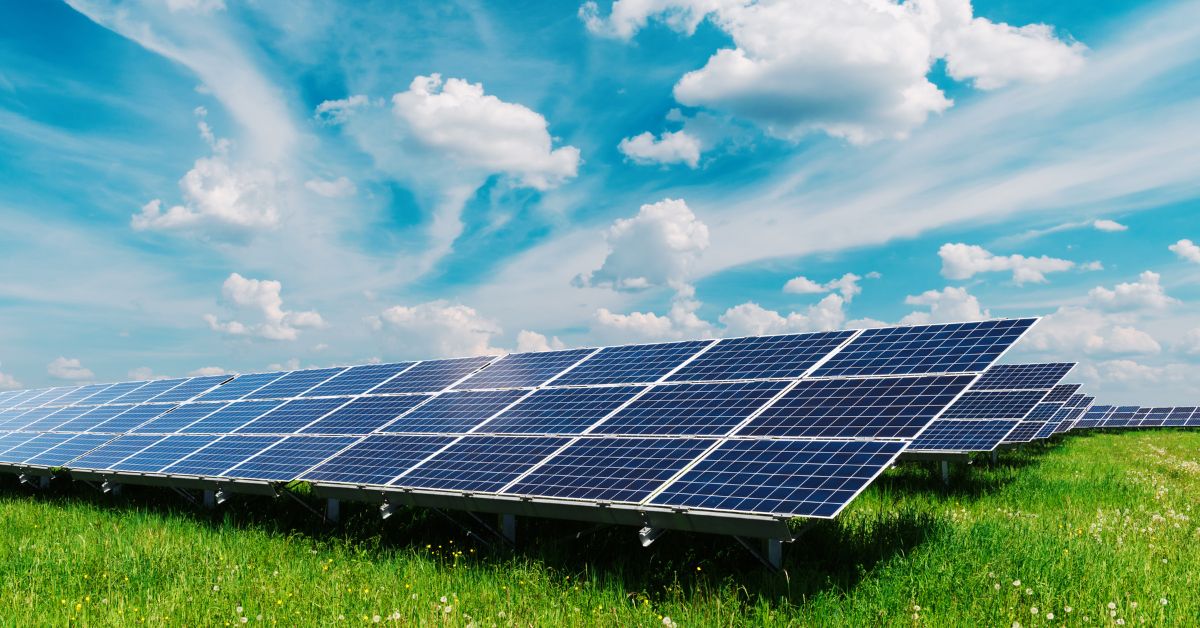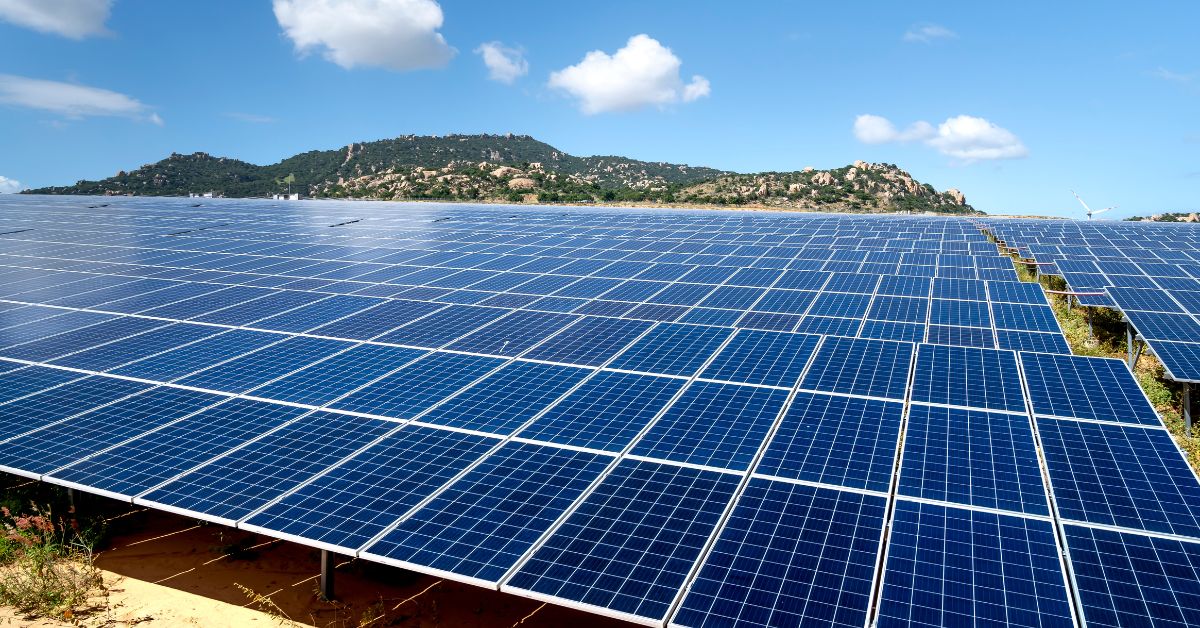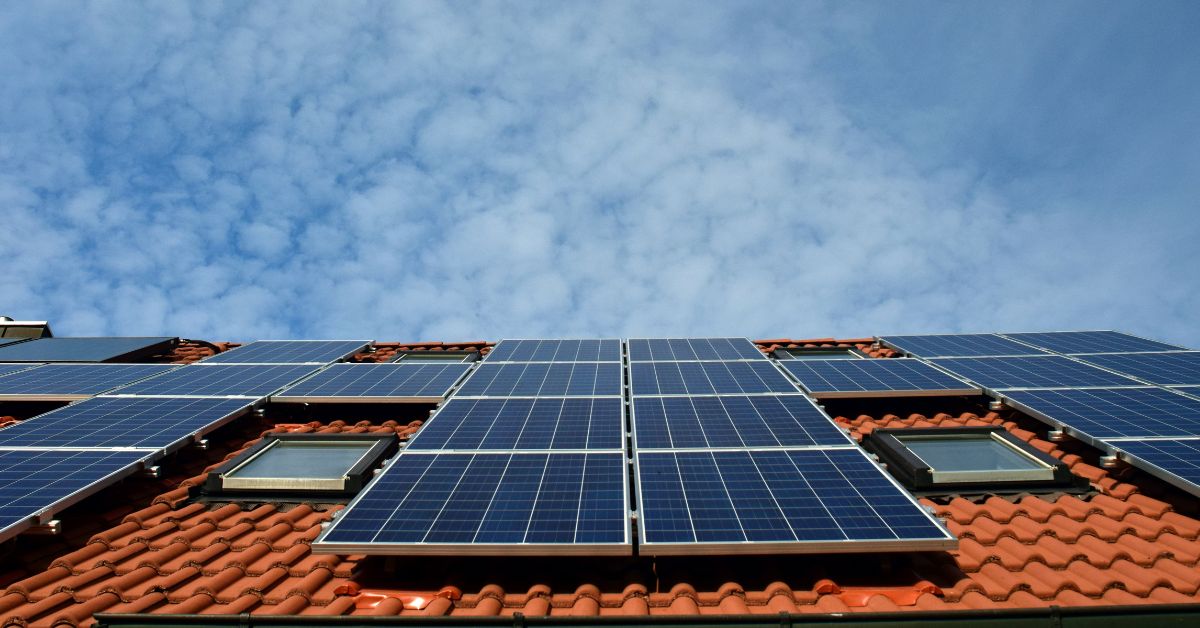Solar Panel Problems
Know the details about Solar Panel Problems, while efficient and environmentally friendly, can encounter various problems that affect performance. Dust, dirt, and bird droppings can accumulate on the surface, reducing the system’s efficiency.
Weather-related issues, such as hail or extreme temperatures, may damage the panels, leading to cracks or malfunctions. Shading from nearby trees or buildings can also hinder energy production. Electrical issues, including faulty wiring or inverter problems, may disrupt power conversion. Degradation over time is inevitable, causing panels to lose efficiency gradually. Poor installation, inadequate maintenance, or incompatible equipment can further exacerbate these issues, leading to suboptimal solar energy output.
Table of Contents
Solar Panel Problems: Common Issues and How to Overcome Them
In recent years, solar power has emerged as one of the most promising renewable energy sources. With growing concerns about climate change and the rising costs of fossil fuels, many households and businesses are adopting solar energy systems to reduce their carbon footprint and save money on energy bills. However, like any technology, solar panels are not without their challenges. This comprehensive guide will delve into some of the most common problems associated with solar panels, offering insights on troubleshooting, preventing, and resolving these issues.
Introduction to Solar Power
Solar power harnesses energy from the sun and converts it into electricity using photovoltaic (PV) cells. These cells, commonly found in solar panels, absorb sunlight and create an electric current. Solar energy systems typically consist of solar panels, an inverter to convert the direct current (DC) generated by the panels into alternating current (AC), which is used by most household appliances, and a battery for storage in some cases.

While the technology has proven effective, efficient, and environmentally friendly, there are several challenges users may encounter during the installation, maintenance, and operation of solar panels. Understanding these problems is essential for ensuring optimal performance and maximizing the return on investment in solar energy systems.
Solar Panel Efficiency Degradation
Problem: Over time, solar panels can lose their efficiency due to a variety of factors. This is known as “efficiency degradation” and refers to the gradual decline in the panels’ ability to convert sunlight into usable electricity. This reduction in efficiency is typically slow and occurs over the course of several decades.
Causes:
- Weathering: Exposure to the elements, especially UV radiation from the sun, can degrade the materials used in the panels, reducing their ability to generate electricity.
- Microcracks: Small cracks can form in the solar cells over time, either during transportation, installation, or due to thermal expansion and contraction. These microcracks can disrupt the electrical pathways within the panel, reducing output.
- Potential Induced Degradation (PID): PID occurs when there’s a voltage difference between the solar cells and the frame of the panel. This can cause current leakage and reduced efficiency.
Solutions:
- Choose high-quality panels that come with warranties covering efficiency degradation. Most reputable manufacturers offer warranties that guarantee around 80-90% efficiency after 25 years.
- Regularly inspect panels for signs of damage, and ensure they’re installed by experienced professionals who can minimize the risk of microcracks.
- Consider PID-resistant panels or inverters that can help mitigate potential degradation from voltage differences.
Shading Issues
Problem: Solar panels rely on unobstructed sunlight to function efficiently. When trees, buildings, or other structures cast shadows on the panels, even if only partially, it can significantly reduce the amount of energy produced.
Causes:
- Trees growing over time may start to cast shadows on panels that were previously unshaded.
- New buildings or structures, either on your property or nearby, may block sunlight.
- Dirt, leaves, bird droppings, or snow can accumulate on the panels, causing localized shading and reducing output.
Solutions:
- Location: Proper planning during installation can minimize shading issues. Ensure that the panels are positioned in areas that receive full sunlight for the majority of the day.
- Trimming Trees: Regularly prune nearby trees to prevent shading, or remove them entirely if necessary.
- Microinverters or Power Optimizers: These devices allow each panel to operate independently, so shading on one panel doesn’t affect the entire system’s performance. They can significantly reduce the impact of partial shading.
- Regular Cleaning: Keep the panels clean by removing dirt, snow, and debris regularly to ensure optimal performance.
Inverter Failure
Problem: The inverter is a crucial component of a solar energy system, responsible for converting the DC electricity is produced by the panels into AC electricity that can be we used by household appliances. Inverter failures are one of the most common problems faced by solar panel owners, and they can lead to a complete halt in energy production.
Causes:
- Overheating due to improper placement or poor ventilation.
- Electrical surges or grid instability, which can damage the inverter’s components.
- Aging components, as inverters typically have shorter lifespans than the panels themselves.
Solutions:
- Proper Installation: Ensure that the inverter is installed in a shaded, well-ventilated area to prevent overheating. Some homeowners opt for indoor installations to protect the inverter from extreme weather.
- Surge Protectors: Installing surge protectors can safeguard your inverter from electrical surges caused by lightning strikes or grid fluctuations.
- Monitoring Systems: Many modern inverters come with monitoring systems that allow you to track their performance and detect potential issues early. Regular maintenance and timely replacement of inverters can prevent unexpected failures.
Wiring and Connection Issues
Problem: Solar energy systems consist of numerous electrical connections, including the wiring between the panels, the inverter, and your home’s electrical system. Faulty wiring or poor connections can lead to energy losses or complete system shutdowns.

Causes:
- Poor-quality installation leading to loose connections.
- Exposure to weather conditions that cause wires to degrade over time.
- Rodents or birds chewing on exposed wiring.
Solutions:
- Choose a Reliable Installer: Ensure that your system is installed by a qualified, experienced professional to reduce the risk of poor wiring connections.
- Inspect Wiring Regularly: Periodic inspections of the wiring can help identify any wear and tear before it leads to larger issues. Replacing damaged wires promptly can save you from significant energy losses.
- Protect Exposed Wires: Use conduit or protective coverings to shield wiring from the elements and pests. Keeping wires hidden and secured can reduce the risk of animals damaging them.
Weather-Related Damage
Problem: Solar panels are designed to withstand various weather conditions, but extreme weather events can sometimes cause damage that affects their performance. Hailstorms, heavy winds, lightning, and snow accumulation are all potential threats to solar panels.
Causes:
- Hail: Large hailstones can crack or shatter the glass surfaces of solar panels.
- Wind: Strong winds can dislodge panels or damage mounting hardware.
- Lightning: Although rare, lightning strikes can cause electrical surges that damage inverters or other components.
- Snow: Heavy snow accumulation can block sunlight, and in extreme cases, excessive weight can strain the mounting structure.
Solutions:
- Durable Panels: Invest in high-quality, weather-resistant panels designed to withstand hail and other harsh conditions. Most panels are tested for durability against hailstones of a certain size.
- Strong Mounting: Ensure that your panels are securely mounted using high-quality brackets that can resist strong winds. Windproof designs are available in regions prone to high winds.
- Lightning Protection: Install a surge protector to prevent damage from electrical surges caused by lightning strikes.
- Snow Removal: In snowy climates, use a snow rake or other non-abrasive tools to remove snow from the panels. This helps maintain performance and reduces the risk of damage from excessive snow weight.
Hot Spots
Problem: Hot spots occur when certain areas of a solar panel overheat, leading to reduced efficiency and potential damage to the panel. They are usually caused by electrical imbalances or faulty cells within the panel.
Causes:
- Faulty soldering or connections between the cells.
- Manufacturing defects leading to cell mismatch.
- Dirt or debris that causes uneven heating across the panel.
Solutions:
- Quality Panels: Purchase panels from reputable manufacturers that ensure high-quality control during the production process.
- Regular Maintenance: Periodically inspect the panels for signs of hot spots, which can often be detected by thermal imaging cameras.
- Preventative Cleaning: Keep the panels clean to avoid dirt and debris from causing localized heating, and ensure the system is regularly maintained by professionals.
Performance Decline Due to Temperature
Problem: Solar panels are sensitive to temperature changes, and while they perform best in direct sunlight, excessively high temperatures can reduce their efficiency. This may seem counterintuitive, but solar panels tend to lose efficiency as temperatures rise above a certain threshold.
Causes:
- Solar panels convert sunlight into electricity more efficiently in cooler environments. However, when the temperature rises, the panels’ electrical resistance increases, leading to reduced energy output.
- Improper installation can lead to poor airflow around the panels, causing them to overheat during hot weather.
Solutions:
- Proper Installation: Ensure that there is adequate space between the panels and the roof to allow for airflow and cooling.
- Install High-Temperature Panels: Some panels are designed to perform better in high-temperature environments. Look for panels with a lower temperature coefficient, which indicates how much performance declines as the temperature rises.
- Use Cooling Systems: In extreme cases, installing water-cooling systems or heat sinks can help keep the panels at an optimal temperature.
Birds, Rodents, and Other Pests
Problem: Birds, rodents, and other pests can cause a variety of issues for solar panel systems. Birds, for example, may nest under panels, while rodents may chew through wiring.
Causes:
- Birds are attracted to the sheltered space beneath solar panels, especially when there is a gap between the panel and the roof.
- Rodents and other small animals may be attracted to the warmth generated by the panels or may simply chew on exposed wiring.
Solutions:
- Bird Mesh: Installing a protective bird mesh around the edges of the solar panels can prevent birds from nesting underneath.
- Conduit for Wiring: Protect any exposed wiring with durable conduit to deter rodents from chewing through it.
- Regular Inspections: Periodically inspect the panels and the surrounding areas for signs of pests, and take appropriate action if any are found.
Battery Storage Issues
Problem: For solar energy systems that include battery storage, issues can arise with the battery itself. Batteries are used to store excess solar energy for use during the night or cloudy days, but they require careful maintenance and management.
Causes:
- Overcharging or Deep Discharging: Overcharging a battery or allowing it to discharge too deeply can significantly shorten its lifespan.
- Temperature Sensitivity: Batteries are sensitive to temperature fluctuations, and extreme heat or cold can affect their performance and longevity.
- Aging: Like all batteries, solar storage batteries have a limited lifespan and will eventually need to be replaced.
Solutions:
- Battery Management System (BMS): A good BMS can help monitor and control charging and discharging to prevent overcharging or deep discharging.
- Temperature Control: Ensure that the battery storage area is temperature-controlled, or use batteries designed to operate in extreme temperatures.
- Regular Maintenance: Regularly check the health of the battery and replace it when necessary to avoid performance degradation.
Installation Errors
Problem: Installation errors are a common problem in solar energy systems, and they can significantly reduce the system’s performance or even cause damage to the equipment.

Causes:
- Poor-quality installation by inexperienced technicians.
- Incorrect placement of panels leading to suboptimal sunlight exposure.
- Improper wiring or mounting that leads to system failures.
Solutions:
- Choose a Certified Installer: Always use a certified, experienced solar installer to ensure that the system is set up correctly. Check for customer reviews and certifications before hiring.
- Regular Inspections: Have your system inspected periodically by a professional to ensure that everything is functioning correctly and to catch any potential issues early on.
- Ensure Correct Positioning: Work with your installer to ensure that the panels are positioned to receive the maximum amount of sunlight throughout the day.
FAQs About Solar Panel Problems
Q1. Why is my solar panel system producing less power than expected?
Several factors could be reducing power output, including shading from trees or buildings, dirty panels, faulty inverters, or degraded panel efficiency over time. Regular maintenance and monitoring help identify the issue quickly.
Q2. What causes hot spots on solar panels, and how can I prevent them?
Hot spots occur when parts of the solar panel overheat due to shading, dirt, or physical damage. This can lead to reduced performance and potential panel failure. Preventing hot spots requires regular cleaning, proper installation, and ensuring panels are not shaded.
Q3. Why did my solar inverter stop working?
Solar inverters may fail due to grid-related issues, overheating, faulty connections, or age-related wear. Check for error codes or warning lights on the inverter. Regular servicing of inverters can prevent unexpected breakdowns.
Q4. How do I troubleshoot a solar panel that isn’t generating power?
Start by checking the inverter for error messages. Ensure there are no tripped breakers or damaged wires. Also, inspect the panels for any visible damage, shading, or debris that might block sunlight.
Q5. Can extreme weather damage my solar panels?
Solar panels are designed to withstand harsh weather, but extreme conditions like hail, heavy snow, or strong winds can cause physical damage. It’s a good idea to check for damages after severe weather and ensure your panels are securely installed.
Q6. What should I do if my solar panels are dirty or dusty?
Dust, dirt, and bird droppings can reduce solar panel efficiency. Regular cleaning with water or a mild detergent can help maintain performance. In dusty or polluted areas, professional cleaning services may be required more often.
Q7. Why is my solar system showing low efficiency during hot weather?
Solar panels can lose efficiency when temperatures rise above 25°C (77°F). This is because excessive heat reduces their ability to convert sunlight into electricity. Installing panels with proper ventilation or choosing high-temperature tolerant models can mitigate this issue.
Q8. How do I know if my solar panels are degrading?
Over time, all solar panels degrade and produce less power. Monitoring your system’s output regularly will help you notice any drop in performance. Most panels degrade at a rate of 0.5% to 1% per year, and anything more drastic may signal a problem.
Q9. What are the signs of electrical faults in a solar panel system?
Electrical faults can include flickering lights, system shutdowns, or inconsistent power generation. Faulty wiring, loose connections, or inverter issues are common culprits. An electrical professional can conduct a thorough check to prevent fire risks and system failures.
10. How long do solar panels last, and when should I consider replacement?
Solar panels typically last 25 to 30 years, but performance may drop after 20 years. If your system’s output becomes significantly lower than when installed, it may be time to consider replacement or upgrade to more efficient technologies.
Solar panels are a powerful tool for reducing energy costs and lowering carbon footprints, but like any technology, they are not without their challenges. Understanding the common problems that can affect solar energy systems—and knowing how to address them—will help ensure that your investment in solar power pays off in the long run.
By selecting high-quality components, working with experienced installers, and performing regular maintenance, you can minimize the risk of many of these issues and enjoy reliable, sustainable energy for years to come. As the world shifts toward greener energy solutions, overcoming these challenges will be key to unlocking the full potential of solar power.

